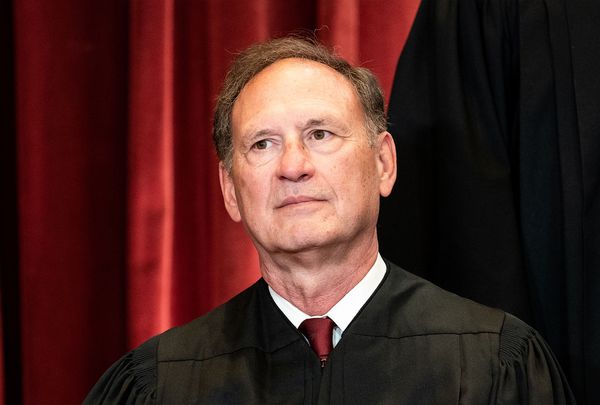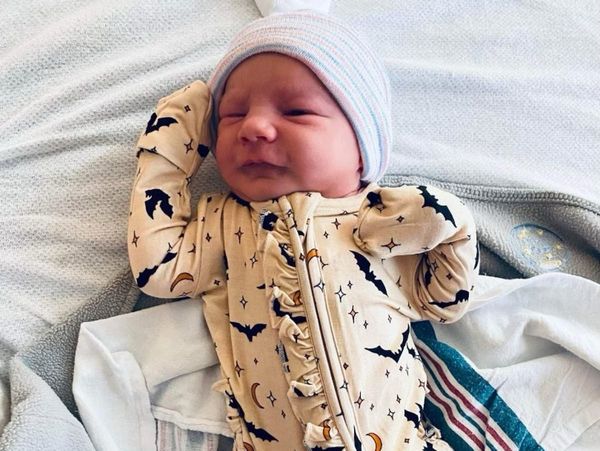
“Don’t be put off by the silly name,” says Pam Fleming to a loud chorus of pop-pop-pop as ping-pong-like paddles strike a plastic ball back and forth on what used to be a tennis court in Sydney’s north. “This game could really be the next big thing here.”
That name, and game, is pickleball. It was created in the US in 1965 and its name was a riff on the “pickleboat” – where left over rowers who did not make the cut for official teams would row together – to represent the game’s hodgepodge of ping pong, tennis and badminton.
In the past eight years or so it has been increasingly (but not quietly) edging its way on to tennis courts across Australia, with anecdotal claims it is now the fastest-growing sport in the country.
There are an estimated 20,000 pickleball players in Australia, with players, or “picklers”, skewing older at an average age of about 58. But Ron Shell, the chief executive of Australia’s National Pickleball League, believes in three years that will grow to at least 1 million and in 10 years it will be an Olympic sport.
Yet that growth is tempered by a hurdle: the need for dedicated pickleball courts, which are about a third the size of a tennis court, with a lower net.
“People get excited about the sport,” Shell says. “And then they’re like ‘So, where can I play?’”

Fleming, who is 52 and based in Sydney, came to pickleball in 2019 after her tennis partner said: “I found a new sport for us.” She says the usual solution is to tape down lines and string nets across existing tennis, netball or basketball courts. However, the sharing means limiting how often players can revel in a hit.
“You’ve got to pick your time and make sure it’s OK,” she says.
That is starting to change. Fleming speaks to Guardian Australia while at the National Pickleball League’s first championships, which took place at Voyager tennis club in Willoughby.
Three weeks ago, the club unveiled the first ever dedicated pickleball courts in Sydney on what used to be a multi-purpose tennis, basketball and netball court.
Seeing pickleball become a sport deserving of its own courts requires a level of diplomacy so as not to step on other sports’ toes.
It is a lesson that has been learned from the US, where players are forecast to reach 22 million this year, and a feud of epic nimby proportions is afoot.
Pickleball in the US is opposed on two fronts: tennis players unwilling to cede their courts and residents who have described the incessant pop-pop-pop ringing as being like “having a pistol range in your back yard”.
So are the nimbys of Australia about to find themselves a new foe? Shell says they are doing their best to avoid it.
“As it stands today, there’s no real pickleball controversies,” he says.

Shell thinks the noise is unlikely to be an issue because Australia’s sport centres are not closely nestled in residential areas like in the US. Also, new types of rackets to dampen the noise are starting to hit the market.
As to the turf war, Shell says they are in discussion with Tennis Australia to get ahead of the possibility of a similar US-style drama playing out here with a pitch to “work together”.
“Otherwise, what’s going to happen here is what’s happened in the US, where 40% of tennis courts have been converted to pickleball courts over the past four years because it just makes more commercial sense and more people actually play pickleball day to day,” he says. “So, to me, that’s the biggest ‘controversy’ that might be coming soon to Australia.”
A spokesperson for Tennis Australia says it supports the integration of pickleball at existing tennis facilities but only where those courts are being under-utilised.
“With tennis remaining the most popular racket sport in Australia, and with a range of new tennis programs available, there are many instances where clubs are thriving without complementary formats.
“Pickleball does have some barriers (surface requirements, environmental conditions, noise), which would not make it suitable for every club.”

Shell says a number of tennis clubs – where there is an issue of courts sitting unused – have already signed up as affiliates.
“They realised that a lot of their tennis courts are sitting unused and they can change one tennis court into three pickleball courts as a general rule,” Shell says. “And they can make so much more money.”
Investors, too, have realised there is money to be made. In November, an indoor pickleball centre will open in South Melbourne with backing from “a few ex-athletes and a few strategic, sophisticated investors”, Shell says. Sydney may have a centre next year and, soon after, Brisbane and Perth.
This will, Shell hopes, aid his other grand scheme: to make pickleball hip among the young and realise its potential as a cross-generational sport.
Pickleball has long been cast as a “retirement village” sport, Shell says. Its initial uptake among older generations is due to its social aspect and accessibility: it’s a workout yet it’s easier on the body compared with tennis, which has a larger court.
Tony Pollard, who is 56 and just shy of the average Australian pickleball player of 58, says he came to pickleball in 2019 after a 14-year hiatus from tennis and squash.

“It’s been a lot easier on my shoulder because there’s no serving overarm like tennis,” he says.
The young are starting to see its appeal, says Sydneysider Mitch Hargreaves, 25, who won this year’s men’s singles at the World Pickleball Championships in Bali.
“When I first started, I was just playing with my parents,” says Hargreaves, who picked up the sport after travelling back to the US where he was born.
“It’s very social, so you can just hang out with family members with friends. It’s really starting to grab the attention of a lot of younger people now, and it’s only going to more as we grow.”







